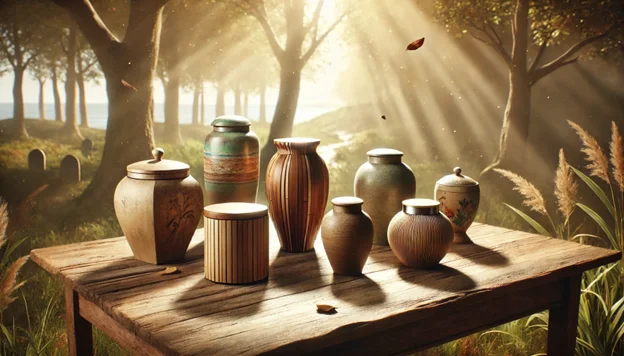Choosing a final resting place that reflects a loved one’s values is a meaningful step in honoring their memory. For many, eco-consciousness plays a significant role in this decision. Biodegradable urns offer a gentle, environmentally friendly option, allowing ashes to be naturally reabsorbed by the earth or water.
This guide will explore critical considerations to help you select the best biodegradable urn, whether your goal is a burial at sea, a garden memorial, or another setting that resonates with your loved one’s spirit.
1. Why Choose a Biodegradable Urn?
Biodegradable urns are crafted from materials that decompose naturally, reducing environmental impact. Unlike traditional cremation urns, which may be made of metals, ceramics, or other long-lasting materials, biodegradable options are specifically designed to break down when exposed to soil or water. This option is ideal for those who prioritize sustainability and wish for a memorial that returns to nature.
2. Types of Biodegradable Urns
Biodegradable urns come in various styles and materials, each suited to different memorial preferences and environments:
- Water-Soluble Urns: Ideal for sea burials, water-soluble urns are crafted to dissolve in water, making them perfect for a peaceful ocean or river tribute. Made from materials like paper and salt, they gradually break down, releasing the ashes naturally.
- Soil-Based Urns: For those who prefer a garden or forest burial, soil-based urns, usually made from sand, plant fibers, or clay, are designed to decompose when buried in the earth. Some types even allow plant or tree growth, symbolizing renewal and life.
- Plantable Urns: These unique cremation urns incorporate tree or flower seeds, creating a living memorial that can be nurtured and enjoyed for years. Often made from recycled paper or coconut shells, these urns offer a deeply symbolic tribute to a loved one.
3. Factors to Consider When Choosing a Biodegradable Urn
Selecting a suitable biodegradable urn involves a few practical considerations:
- Location of the Memorial: The location of the urn is crucial. Water-soluble urns are suitable for oceans, lakes, or rivers, while soil-based or plantable urns work well in gardens, forests, or private lands.
- Material Composition: Different urns use various biodegradable materials, such as sand, clay, or recycled paper. Each material has its decomposition rate, so understanding this can help you make an informed choice based on your environmental preferences and timeline.
- Aesthetic Preferences: Biodegradable urns come in various designs, from simple and elegant to ornately crafted. Choose a style that feels fitting to your loved one’s memory and the nature of the memorial.
4. Tips for Creating a Meaningful Tribute
To make the farewell even more unique, consider including personal touches. Many families add a small ceremony or scatter flowers and petals alongside the urn for a memorable tribute. This can create a beautiful, shared experience that celebrates the departed’s life while honoring their connection to nature.
5. Benefits of Using Biodegradable Cremation Urns
Using biodegradable urns allows families to create a more eco-friendly tribute and contribute positively to the environment. Whether in water or soil, these urns align with the natural cycle of life, symbolizing a gentle return to the earth. For those who value sustainability, choosing biodegradable urns can add a layer of peace and fulfillment in honoring their loved one’s memory in an impactful, respectful way.
In choosing a biodegradable urn, you’re providing a meaningful farewell and embracing a compassionate approach that respects both the individual and the environment.

Shannon Reyes is a seasoned writer with a knack for crafting engaging blogs on a variety of service industries, including plumbing, cleansing, moving, pest control, and roofing. With a keen eye for detail and a passion for helping readers navigate complex topics, Shannon brings her expertise to life through informative and accessible content.











